- Home
- entertainment
- news
- 10 details you might have missed in the latest episode of 'House of the Dragon'
10 details you might have missed in the latest episode of 'House of the Dragon'
Kim Renfro

- Warning: Spoilers ahead for "House of the Dragon" season one, episode nine.
- This episode showed major shakeups in King's Landing following Viserys' death.
This is the first time that the opening credits have shown a clear symbol for both Alicent, her three children, and now her grandchildren.
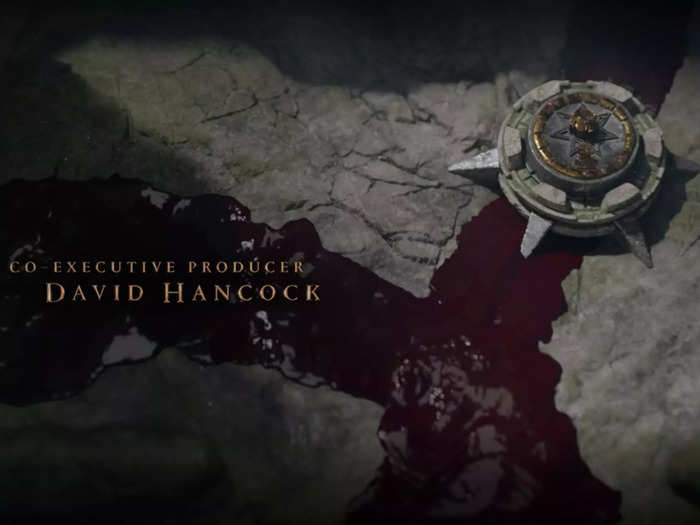
Alicent's little family-tree circle shows the House Hightower sigil (a tower and flame, representing Oldtown) and the Seven-Pointed Star of the Faith of the Seven behind it.
Helaena's circle shows a spider, a symbol of her affinity for critters and cryptic prophecies.
Aegon's symbol appears to be a dragon egg and a naked woman, perhaps an allusion to his antics in the brothels of King's Landing.
And last but certainly not least, we see a sapphire representing Aemond. Though they haven't mentioned this in "House of the Dragon" yet, people who have read "Fire and Blood" know that Aemond is associated with the blue stone because the fictional history book claims that he put a sapphire in place of his missing eye.
The credits also confirm something George R.R. Martin revealed in a blog post last week: Alicent and Viserys have a fourth child named Daeron.
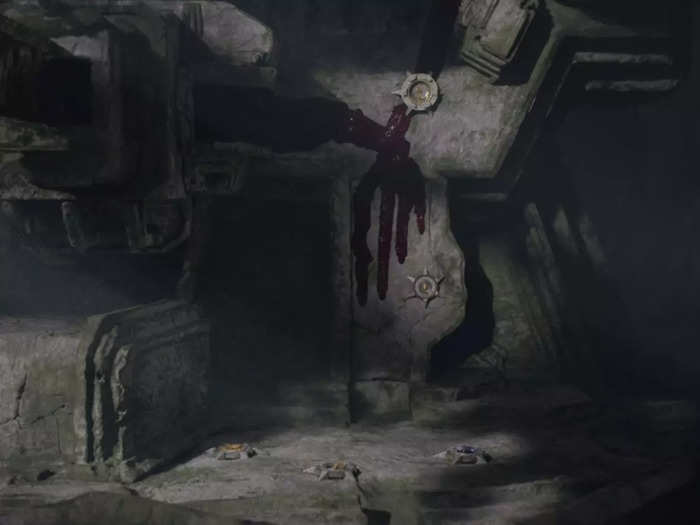
As you can see in the above image, the bloodline from Alicent and Viserys includes a fourth circle set off to the side. This represents Daeron, a fourth child of Alicent's who hasn't been mentioned yet in "House of the Dragon."
Martin said in a blog post that he and Ryan Condal (the HBO series showrunner) couldn't work Daeron into the first season, but assured book-fans that the character is simply living off screen in Oldtown with Lord Hightower (Otto's older brother and Alicent's uncle).
This episode also introduces Helaena and Aegon's children, adding to the multi-generational cast of characters.
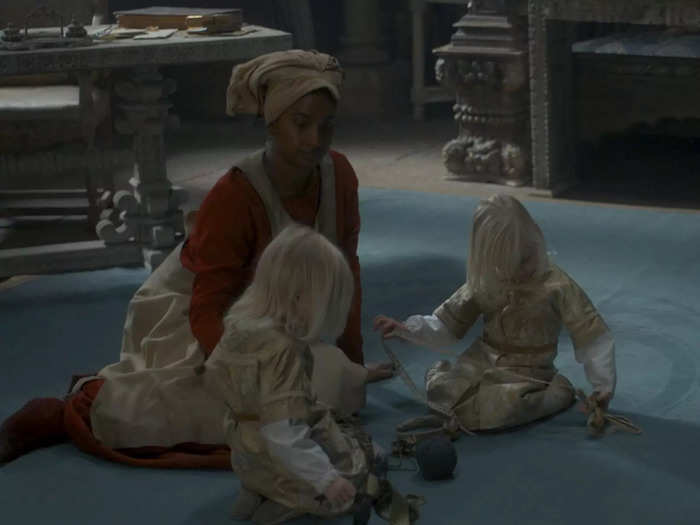
Aegon and Helaena are the two oldest children born to Queen Alicent and King Viserys. At some point during the last big time jump, the brother and sister were married and had at least two children.
In the last episode, Helaena mentioned her children. But this episode we finally get a look at two of the blonde-haired grandchildren of Queen Alicent and King Viserys. They're twins — a boy and a girl named Jaehaera and Jaehaerys.
You can see our full guide to all the Targaryen children across the generations here.
When Otto praises Viserys' memory, his choice of phrasing brings to mind a piece of advice Ned Stark used to abide by when it comes to the word "but."
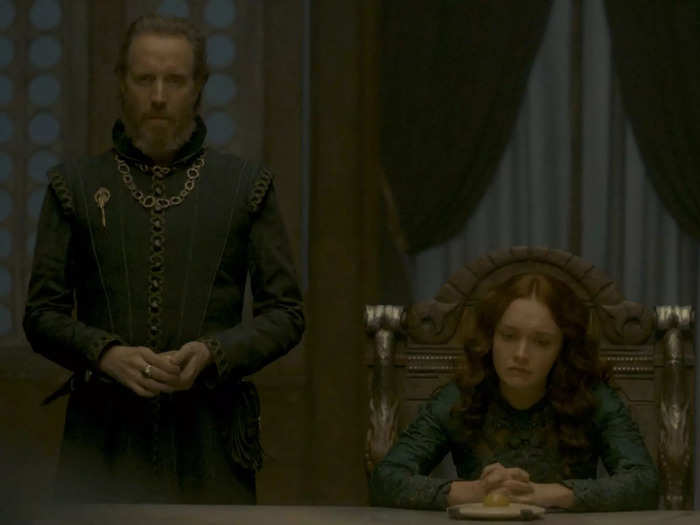
Back in the early episodes of "Game of Thrones," there was a scene between Benjen Stark and Tyrion Lannister at the Wall. Benjen tells Lord Tyrion that Ned Stark (Benjen's older brother), once told him "that nothing someone says before the word 'but' really counts."
In this episode of "House of the Dragon," we see Otto Hightower quickly move on from grieving King Viserys' death to enacting a longstanding plot to prevent Rhaenyra from ascending the Iron Throne.
"We grieve for Viserys the Peaceful, our sovereign — our friend," the Hand of the King begins. And then that fateful word comes in.
"But he has left us a gift," Otto says. "With his last breath, he impressed upon the queen his final wish that his son Aegon should succeed him as Lord of the Seven Kingdoms."
Keeping Ned Stark's wise advice in mind, this scene makes it clear that Otto's insistence of believing Viserys to be a true sovereign and friend was mostly a facade. He had been plotting with others on the Small Council to disregard his King's declaration to name Rhaenyra the next in line for the Iron Throne.
When Criston Cole stepped behind Lord Beesbury, book readers knew that murder was imminent because of a passage in "Fire and Blood."
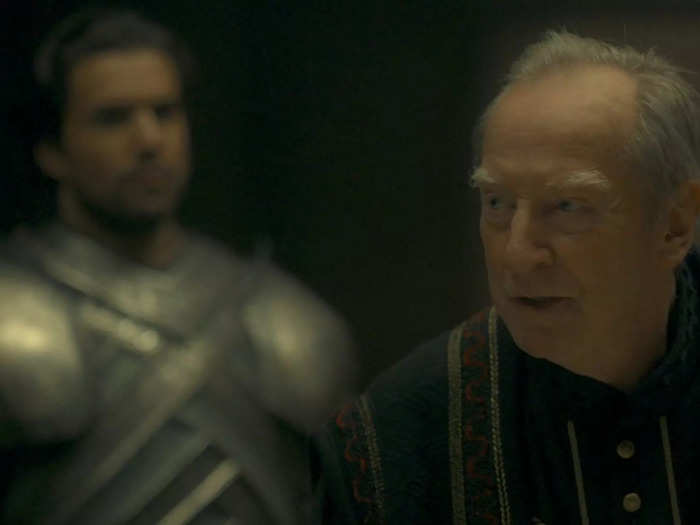
When Lord Beesbury stands up in defense of King Viserys' public choice to proclaim Rhaenyra as his successor, Criston silently appears over his shoulder out of focus.
For people who haven't read "Fire and Blood," this might not have felt ominous right away. But fans of the books know that Beesbury was historically noted as the first "blood shed in the Dance of the Dragons" — the fight between the Greens (Team Aegon II) and the Blacks (Team Rhaenyra).
In "Fire and Blood," there are multiple accounts of how Lord Beesbury was killed, and none of them involved head-smashing on the table. Here's the relevant passage from the book:
"Grand Maester Orwyle tells us that Lord Beesbury was seized at the door by the command of Ser Otto Hightower and escorted to the dungeons. Confined to a black cell, he would in time perish of a chill whilst awaiting trial.
Septon Eustace tells it elsewise. In his account, Ser Criston Cole forced Lord Beesbury back into his seat and opened his throat with a dagger. Mushroom charges Ser Criston with his lordship's death as well, but in his version Cole grasped the old man by the back of his collar and flung him out a window, to die impaled upon the iron spikes in the dry moat below."
When Lord Commander Westerling refused the order to kill Rhaenyra, it was nice payoff for the pilot episode's scenes that showed him protecting her as a younger girl.
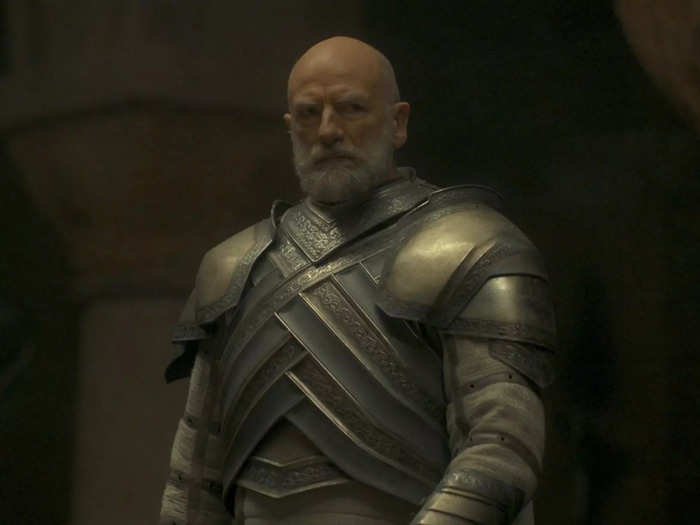
You may have lost track of the Kingsguard shufflings earlier in the season, but Ser Harrold hasn't always been the Lord Commander. In the pilot episode, he was a knight of the Kingsguard and sworn protector of Princess Rhaenyra. He was there to escort her from the dragonpit back to the castle, and he also helped her meet with Daemon in secret before King Viserys knew his brother was back in the city.
Ser Harrold was promoted to Lord Commander o the Kingsguard in episode two after the former leader died. That's why Rhaenyra was allowed to handpick the new kingsguard member — she chose Ser Criston to take Ser Harrold's place as her sworn protector.
Now, about 20 years later, Ser Harrold refused Otto's order to go kill Rhaenyra. Not only did he once care for her, but he's right to remain apolitical in contrast to Ser Criston.
If you're getting the twin kingsguard knights mixed up, their costumes give away a subtle difference between them.
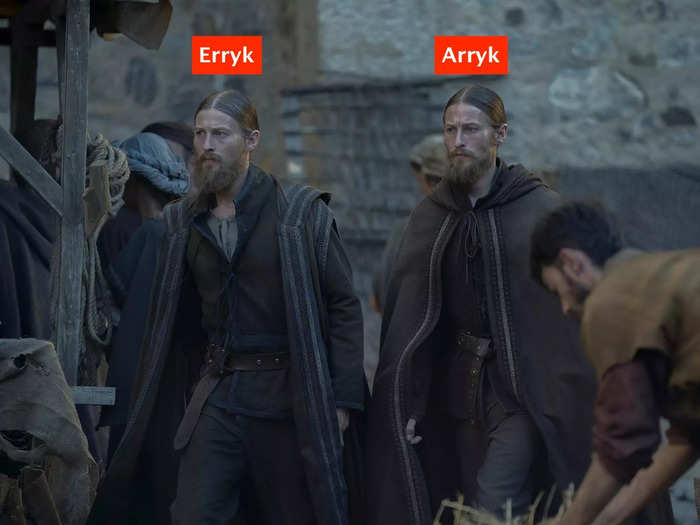
Ser Erryk was introduced in episode eight when he notified Queen Alicent of Aegon's assault on a serving girl. He is the kingsguard knight assigned as Aegon's sworn protector. That means he's had an up close view to his doings. He wears his tunic open and his beard a teensy bit more unkempt than his twin brother.
Ser Arryk is also on the kingsguard, but this episode shows that he is an oathkeeper through and through. Arryk doesn't seem to care what Aegon is like personally — he only abides by his oath to protect the king. In keeping with his tight code, Arryk wears his tunic more tightly buttoned and has ever-so-slightly neater facial hair.
Otto's revelation that Mysaria is the "White Wyrm" is surprising, given that he passed along the report from her to King Viserys about Rhaenyra and Daemon's exploits in episode four.
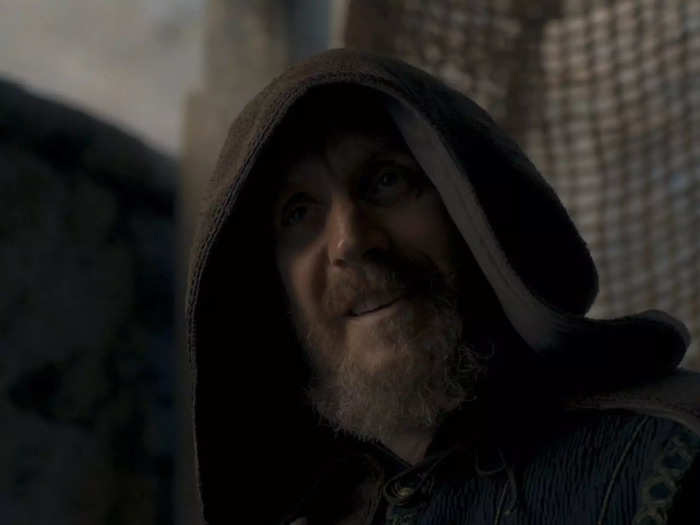
In this episode, Otto and Mysaria come face to face and it appears that this is the first time they've met.
"You yourself are the mysterious White Wyrm, I take it?" Otto asked her. "Or are you simply a further peel in this stinking onion?"
You may remember that Otto was told about Daemon and Rhaenyra's brothel visit by one of the "little birds" who serves Mysaria. He relayed the information (partial and incorrect as it was) to King Viserys and said he was confident in his source.
But now we learn that Otto didn't know the true identity of the White Wyrm at the time. So what gives? Is this just more proof that Otto will do anything in order to discredit Rhaenyra?
When Alicent confronts Otto, the scene is staged in a way that recalls Rhaenys' observation of the Queen.
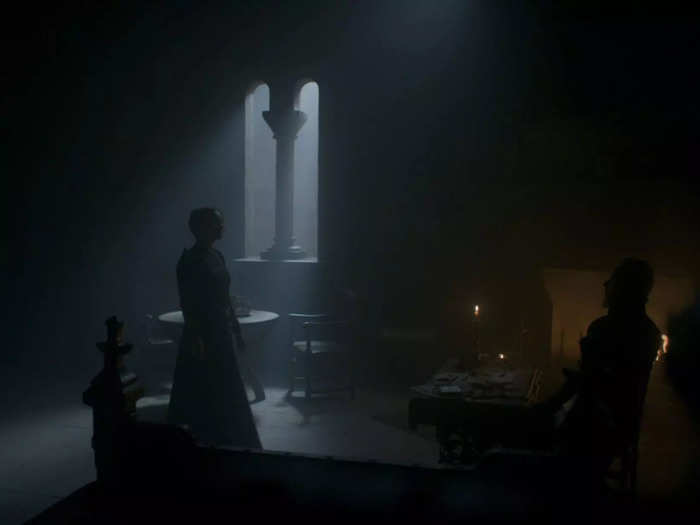
When Alicent goes to Otto's room to tell him she is in control now that she has her son Aegon in hand, there's a shot that shows her standing in the window's light while Otto remains in the shadows.
This feels like a symbolic example of what Rhaenys told Alicent when they spoke one-on-one for the first time.
"You desire not to be free but to make a window in the wall of your prison," Rhaenys said, criticizing Alicent's perspective of control within the patriarchal confines of Westeros.
Indeed, her choice to crown Aegon as king shows that Alicent doesn't truly want to break the system that has led to her misery. If she really just wanted to be free, she could have tried to flee herself and gone to Rhaenyra to explain how everything got so horribly out of control.
But Alicent stayed, believing wholeheartedly in her interpretation of Viserys' final words (which were referencing Aegon the Conqueror — not their son). One conversation with Rhaenyra would have cleared up that misunderstanding.
Tragically, Alicent simply opened a window inside of her prison instead, believing she could control the outcome without bloodshed.
Rhaenys proved her wrong in one dramatic swoop when she massacred a bunch of smallfolk in the dragonpit and escaped King's Landing.
Aegon's sword, named Blackfyre, is another of the coveted Valyrian steel blades.
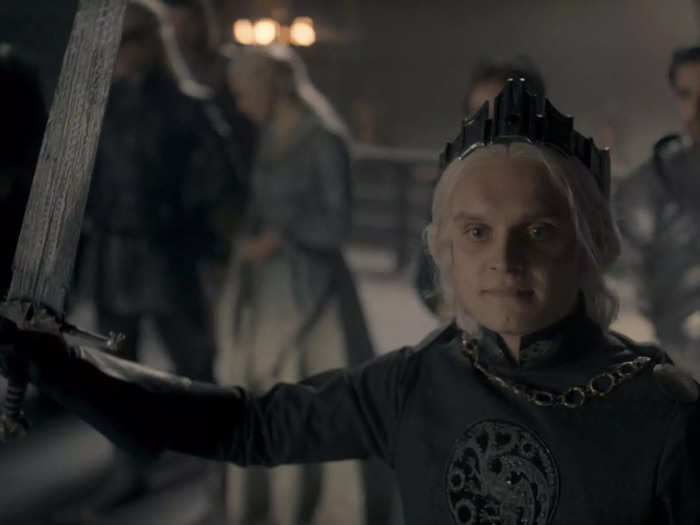
The sword was used by King Aegon I himself, which means the new King Aegon II (Viserys and Alicent's son) bears the crown and blade of the Targaryen man who originally conquered Westeros.
Before Aegon II, the Blackfyre sword belonged to King Jaehaerys (who ruled right before Viserys). For many people in the realm, the possession of the sword signals a strong claim and importance in the royal line of succession.
We'll have to wait for the season one finale to see what Rhaenyra's response will be to King Aegon II's elaborate coronation.
In the meantime, you can read our timeline that shows how "House of the Dragon" has now spanned over 20 years' worth of events.
Popular Right Now
Popular Keywords
Advertisement